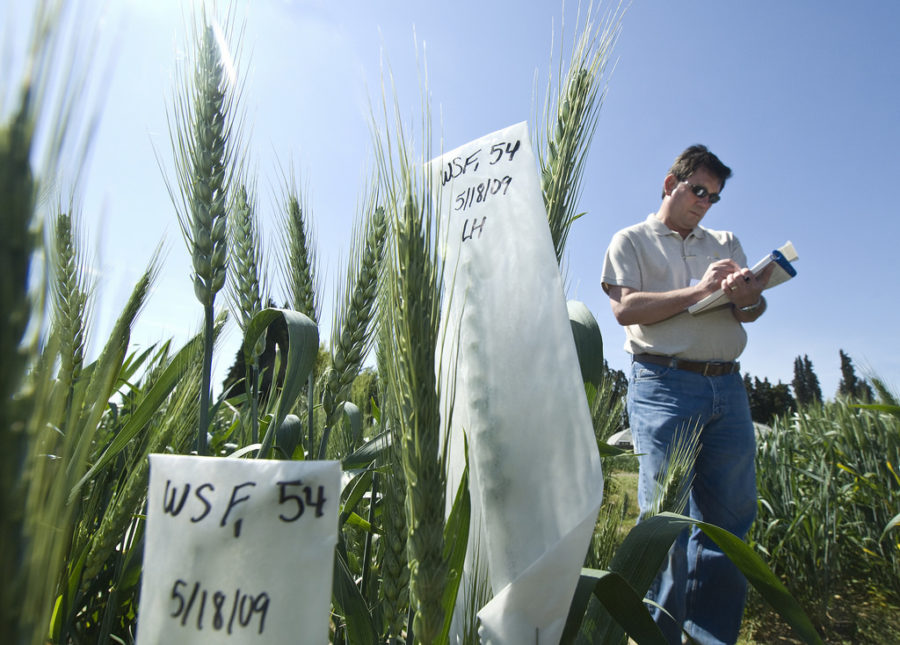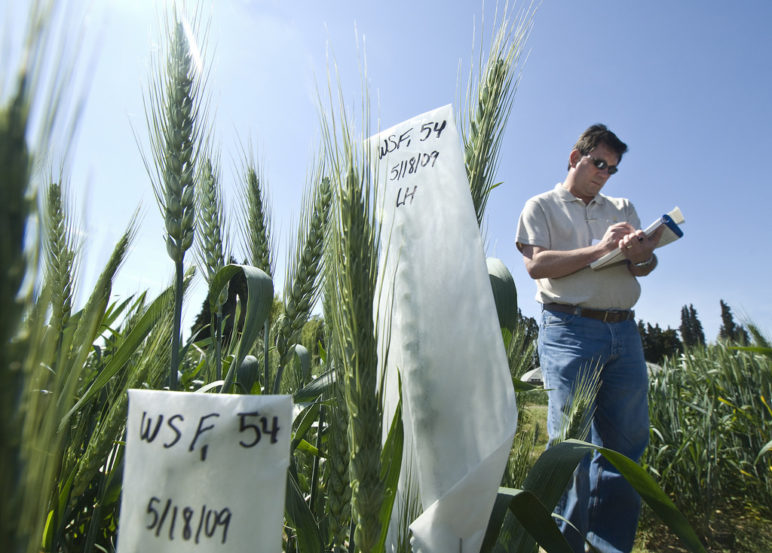In August 2018, a San Francisco jury found Monsanto Company liable for Dewayne Johnson’s non-Hodgkin’s lymphoma.
Johnson, an African-American who served as school groundskeeper, claimed his disease was caused by four years of routinely applying Monsanto’s Roundup weed killer on school property. The jury awarded $39 million in compensatory damages for medical costs and future lost income, and $250 million in “punitive,” damages, finding that Monsanto acted with “malice.”
In October, San Francisco Superior Court Judge Suzanne Bolanos affirmed the jury verdict, but she also held that the California Constitution limits punitive damages to no more than compensatory damages. She reduced overall damages awarded to $78 million, subject to Johnson’s agreement. Johnson may have fewer than three years to live and he accepted the ruling on November 1.
Monsanto, a unit of the transnational chemical and drug giant Bayer AG, consistently denies that Roundup or its “active ingredient,” glyphosate, causes cancer. But Monsanto has also tried to undermine a 2015 finding classifying glyphosate as “probably carcinogenic in humans,” as determined by the International Agency for Research on Cancer (IARC), part of the World Health Organization. Monsanto never tested the carcinogenicity of Roundup “formulations” containing glyphosate along with other ingredients, which the company may consider proprietary.
As Johnson’s experience demonstrates, glyphosate/Roundup is used to kill weeds in residential and public recreational settings. Glyphosate is also applied in agriculture. In the Pacific Northwest, use of this weed killer includes wheat, sugar beets, pastures, and the floors of orchard crops.
Negative publicity around the chemical has already had an impact on a glyphosate application in the region. When Pope Resources, a private timber company, proposed spraying glyphosate over its land in northern Kitsap County, Washington, the Kitsap Environmental Coalition filed an appeal with the Washington State Pollution Hearings Control Board. In response, Pope announced it would delay spraying until February 2019, when the appeal hearing is scheduled.
But concerns in Cascadia for the weed killer’s effects date back further. When Sightline last covered glyphosate and Roundup, we reported that Monsanto created genetically modified crops resistant to this particular herbicide. In June 2013, Monsanto’s glyphosate-resistant wheat was found in the field of an Oregon grower who had planted traditional, unmodified wheat. US wheat growers, including organic growers, worried that this contamination would damage exports to Japan and other countries, including the European Union, where genetically modified foods are poorly received. As a result, the Center for Food Safety and several Northwest wheat growers filed a class-action lawsuit against Monsanto.
In November 2014, Monsanto settled the suit with specific plaintiffs, agreeing to pay wheat grower associations in Idaho, Oregon, and Washington State. The company also paid over $2 million into a settlement fund for wheat growers in the same states.
Growers planting the genetically modified crops spray with enough Roundup to kill weeds, but not so much to prevent the crop from growing. But as we also reported, constantly spraying Roundup or any other pesticide can lead to pest resistance and Roundup-resistant “superweeds.”
In the US, regulation of genetically modified crops is split among three federal bodies. The Department of Agriculture (USDA) must approve the release of a genetically modified organism into the US. The Food and Drug Administration (FDA) reviews plants that could enter the food supply, and the EPA regulates genetically modified crops with pesticide activity. The EPA also regulates pesticides in general and must determine that each pesticide meets a safety standard for human health.
The EPA first approved glyphosate for application on a broad spectrum of crops in 1974. But the chemical’s usage increased dramatically after 1996 when genetically modified, glyphosate-resistant crops were approved and first planted commercially in the US. In addition, as resistant weeds developed, the EPA accommodated the company by consistently increasing the allowable levels of the chemical on crops. As a result, glyphosate is now the most heavily used herbicide in US agriculture.
Moreover, the Environmental Protection Agency (EPA), which is supposed to regulate pesticides in the US, was sadly lacking in meeting its public health responsibilities. At best, the agency was asleep at the switch on glyphosate. At worst, at least one EPA senior scientist actively colluded with the company to downplay Roundup’s health risks. As a consequence, EPA’s draft human health risk assessment (December 2017) evaluated non-cancer health concerns and concluded that risks were acceptable.
For its part, Bayer AG, which absorbed Monsanto in June 2018, announced it would appeal the San Francisco verdict even with reduced damages, but the company now faces up to 8,700 similar lawsuits. Meanwhile, the material documenting Monsanto’s mendacity has been made public.
John Abbotts is a Sightline research consultant who occasionally submits material that Sightline staff members turn into articles. However, responsibility for this post lies solely with the author.










Tont Davis
The EPA, USDA, UN, EU and 3 parts of 4 The Who said that glyphosate is NOT a carcinogen. One part of WHO (that didn’t use all the safety data and excluded a key study of cancer in farmers that showed no links to any cancer) spent a 4 hour session several years ago and classed glyphosate is a cancer risk in the same risk category as eating processed meats, working in barber shop and working nights but less of a risk than eating red meat (a definitive cancer of cancer) – all their classifications.
A jury of lay persons is not the right group of people to decide if a chemical is a cancer risk but unfortunately our legal allows for it. The judge that decided what experts to include was himself very doubt of their reliability.
It is reckless and failing in your duty to share the facts to not share these facts in this story. The EPA despite the shortcomings on many things have labored over the fact that glyphosate is not cancer forming yet there is a lot of fake news scaring people and so they have gone way beyond their duty in being careful on this.
The EU safety team that spent 4 years researching the safety for the whole EU is very upset with the French WHO team’s classification that flies in the face of the data.
We can’t have a safety system based on scare and fake stories even more than we can have a President that uses fake news
John Abbotts
Since the concern is facts, one very basic fact should be made clear: The trial judge was Suzanne Bolanos. Calling her “himself” is inaccurate.
With regard to the attack on the jury, they reached their verdict by answering a series of questions, and readers can follow their reasoning at https://www.baumhedlundlaw.com/pdf/monsanto-documents/johnson-trial/Johnson-vs-Monsanto-Verdict-Form.pdf
With regard to EPA’s review, information suggests it was tainted by a senior agency official who actively corresponded with Monsanto and worked to benefit the company, link at https://en.wikipedia.org/wiki/United_States_Environmental_Protection_Agency
In addition, information on other Monsanto efforts to influence scientific findings can be found at https://www.democracynow.org/2018/8/14/how_monsanto_plants_stories_suppresses_science
Brian Mahany
Experts are divided on whether glyphosate is carcinogenic. But the inquiry doesn’t end there.
An internal Monsanto email from 2002 highlights the real issue, is the active ingredient in the RoundUp brand herbicide, glyphosate, safe when mixed with other chemicals? According to that email,
“Your last comment hits exactly where I am coming from. we discussed the situation with Helson and DeSesso and concluded, not surprisingly, that we are in pretty good shape with glyphosate but vulnerable with surfactants. what I’ve been hearing from you is that this continues to be the case with these studies – Glyphosate is OK but the formulated product (and thus the surfactant) does the damage. we had a low-risk strategy to generically deal with the issue but couldn’t implement it for budgetary reasons. In the meantime, the studies with endocrine/repro endpoints keep coming, so we should re-visit the issue. can we scale back a repro study to make it budgetarily palatable? Is there something less expensive we can do? or do we stand pat and take our lumps as they come? unfortunately, we don’t get to choose what gets dignified outside our 4 walls and what doesn’t. we had a close call vis-a-vis mutagenicity/EU review a couple years ago.
That single statement says it all, “Glyphosate is OK but the formulated product (and thus the surfactant) does the damage.”
Monsanto has a troubled history of influencing supposedly independent scientific studies and employing testing labs with a record of fraud.
Monsanto wants us to believe that glyphosate is safe. Maybe it is. But is it safe when mixed with other chemicals? Should we believe a company that lied about PCB’s for decades? Should we believe a company that influences scientific literature and studies?
A jury in San Francisco heard from scientists on both sides and concluded that RoundUp was responsible for the terminal cancer suffered by DeWayne “Lee” Johnson, a former school groundskeeper.
Until tMonsanto / Bayer becomes completely transparent and until the experts reach a consensus, RoundUp and similar glyphosate formulations should be banned.
[The author is an attorney representing cancer victims and Monsanto employee whistleblowers.] whistleblowers
Pam Driscoll
The EPA has been influenced by industry to the point they can’t be trusted. A jury is given scientific evidence to base their verdict. One of the last corporations I would trust is Bayer/Monsanto!
When in doubt DON’T USE IT!
John Abbotts
Hello,
The comment train appears to be winding down.
I appreciate all the comments, supportive or otherwise.
When an article receives no comments, one wonders whether that is because readers completely agree, completely disagree, or because the article was confusing.
Thanks to the commenters for their interest in Sightline’s work, and for offering their opinions.
Serena Hartwell
This article is so good to read! There is such an overwhelming amount of information that is positive for the use of pesticides, especially glyphosate. It is very worrying when Monsanto/Bayer undermine any research that hints at the negative health effects of long term pesticide use. As a mom who tries to keep my families’ diet and lives as pesticide free as possible, I welcome more articles like this!
John Abbotts
Hello Serena,
Thank you for the positive feedback, and for your interest in Sightline’s work.
John Abbotts
A brief update. I have not cleared my comment with Sightline editors, so I accept sole responsibility for the material that follows:
In June 2020, Bayer, which absorbed Monsanto along with its financial liabilities, announced it would pay more than $10 billion to settle cancer lawsuits over the herbicide Roundup, where glyphosate was an “active ingredient.” Details at https://www.nytimes.com/2020/06/24/business/roundup-settlement-lawsuits.html
At the same time, under the settlement, Bayer will continue to sell glyphosate products with no warning labels about their safety.
The end of the article also reported other recent Bayer financial settlements:
Up to $400 million to settle claims on another pesticide inherited from Monsanto, dicamba, which can drift after it is sprayed and damage other crops. Bayer also put aside $820 million to settle longstanding lawsuits related to PCBs (polychlorinated biphenyls) in the water supply; these are known toxic chemicals banned in the United States four decades ago.
For its part, EPA continues to defend glyphosate use, but reports that later this year, it expects to release a draft biological statement for public comment, details at https://www.epa.gov/ingredients-used-pesticide-products/glyphosate.
Interested readers may want to check back on EPA’s website for news about glyphosate.
John Abbotts
The comment above mentions the draft biological evaluation (BE) by EPA on glyphosate. Well, as the Trump administration is going out the door, they recently extended the deadline for public comment on their draft to March 13, 2021. As EPA explains in a press release, the BE examines whether an individual pesticide might have negative impacts on endangered or threatened species. The press release also explains how to submit comments electronically, link at https://www.epa.gov/pesticides/comment-period-extended-glyphosate-draft-biological-evaluation
However, readers may wish to find an organization where they could add their names to comments already draft. After a short internet search, I found this factsheet and accompanying letter prepared by GMO Free/Toxics Free USA, at https://gmofreeusa.salsalabs.org/epaglyphosateesabiologicalevaluations/index.html. They offer the opportunity to sign on to their comments and/or keep informed on their glyphosate efforts. Their factsheet and comments seem reasonable to me, but I confess that this is the first time I encountered the organization; and therefore I am not in a position to endorse them. Readers should feel free to conduct their own search for where they can add their names.
As usual, responsibility for these comments lies with me alone.
All stay safe,
John Abbotts
Hello,
Another month, another update. There are probably few readers following this comment trail, so this may just be an update for the record; and maybe future updated article.
But on the matter of the “superweeds” that nature developed as resistant to glyphosate, EPA decided to address the matter with a combination of herbicides, trade name Enlist Duo, containing both glyphosate and 2,4-D as herbicides, to be used on corn, soybean, and cotton crops, each genetically modified to be resistant to both herbicides.
Now, will this work, or will it only result in new superweeds resistant to both herbicides, analogous to the multiple-drug resistant microbes encountered in medicine due to overuse of antibiotics? details at https://en.wikipedia.org/wiki/Multiple_drug_resistance
It is too early to tell, but EPA has promised to revisit its decision in five years to reassess the weed resistance issue.
Btw, 2,4-D is a chlorinated organic pesticide, details at https://en.wikipedia.org/wiki/2,4-Dichlorophenoxyacetic_acid
Fortunately, it is not a persistent, bioaccumulative toxin such as DDT (banned in the 1970s) or its chemical cousin, Dicofol (still allowed on imported tea).
2,4-D is also classified as a possible or potential carcinogen by international agencies, but not by EPA.
Now, manufacturers maintain that glyphosate does not cause cancer by itself, but the legal theory that convinced Bayer to settle is that “formulations” of including the active ingredient glyphosate plus other supposedly “inert” constituents, have combined to cause cancers. EPA only requires cancer studies on the “technical” grade of a pesticide, essentially 95 percent or so pure, and not formulations, which could cover all sorts of variations. In short, Bayer had no information to contest the legal theory, and decided to set aside the $10 billion as reported in the comment above.
Detailed explanations might require at least another article, and the information here provides a starting point. How formulations with 2,4-D plus glyphosate might influence health effects remains to be seen.
In the meantime, Sightline editors should stop me now if the comment chain is getting too long.
All stay safe,